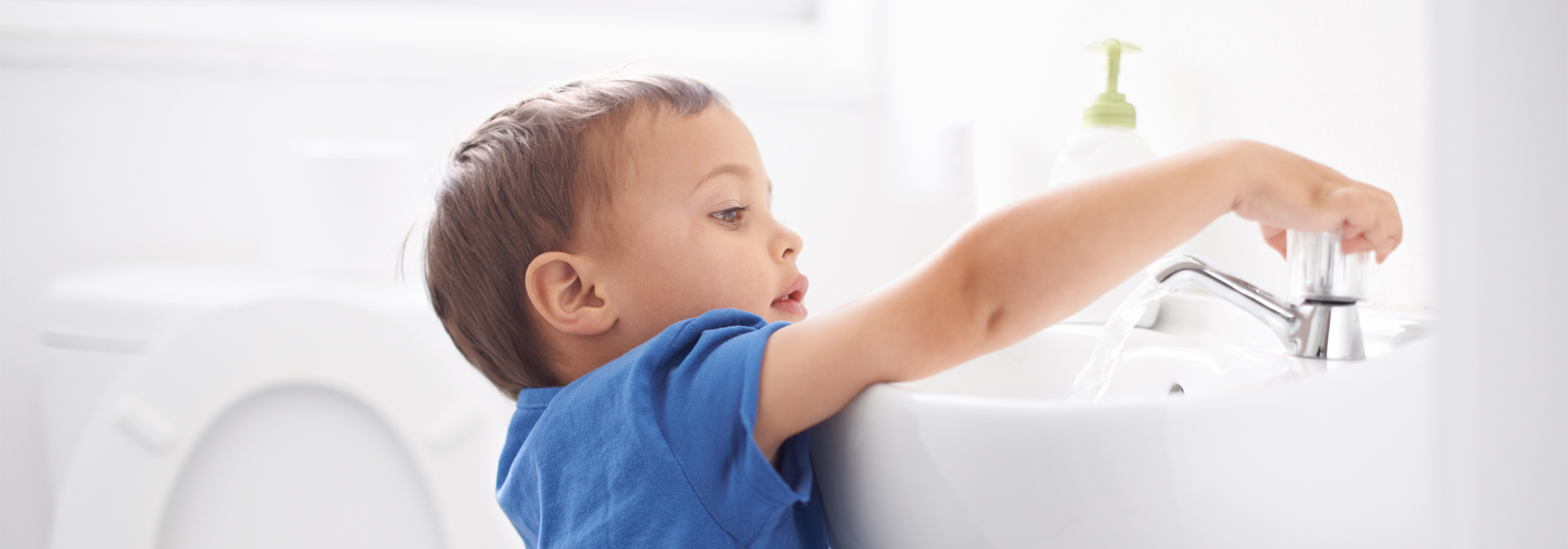Potty Boot Camp
October 14, 2019
Whether your child is on the autism spectrum or not, teaching them to properly use the toilet can be challenging. It helps to have a well-intended plan before starting to help eliminate some stress on both you and your child. Here are some helpful tips to guide you along the process.
The first thing to determine is when the best time to start toilet training is. You’ll want to choose a time when there isn’t already numerous engagements and/or when the environment has stressful factors. Some indicators that can help you decide are:
- If your child is beginning to become aware of using the toilet
- If your child is displaying certain behaviors, such as fidgeting, squatting., when they are wet or in the process of going in their diaper/pull-up
- If your child has shown an interest in the toilet and using it.
The second, and one of the more important things to have is a set routine of how and when your child will use the toilet. Children on the autism spectrum sometimes function best with a routine and set schedule to know what is expected and what is coming up next. So having this can help eliminate a lot of stress on your child.
- When changing your child’s diaper/pullup, do so in the bathroom next to the toilet so they can start to make the connection between the two.
- It is a possibility that your child will behave differently when starting this process, so be sure to inform all people that may be present during the toilet training process.
- Make sure everyone working with your child starts toilet training at the same time and follows the agreed approach. Send all needed materials that you use at home to the nursery/school (smaller toilet seat, underwear, extra diapers, extra shorts, wipes, etc.) It is also important to have clear communication during this time, so having a home/school notebook to share concerns and successes is vital.
- Observe your child for a few days to see when they do a wee or a poo. Identifying a regular pattern can help you know when to take your child to the toilet with an increased likelihood of them using the toilet. This is then followed by positive reinforcement. Every time your child goes on the potty, even if it’s a small amount, automatic reinforcement is crucial. Continue to take your child at set times based on your observations. If they wet themselves at another time, take them to the toilet as quickly as possible and try to get them there so some of the wee goes into the toilet. Ignore the wetting, positively reinforce if any of it goes in the toilet, and continue the rest of the toileting routine.
- Use a visual sequence near the toilet to help your child understand what is expected of them. For example: pants down, underwear down, sit on the toilet, wee/poo in the toilet, wipe, underwear up, pants up, flush toilet, wash hands. The sequence can either be in the form of photographs, pictures or the written word – whatever is most suitable and motivating for your child.
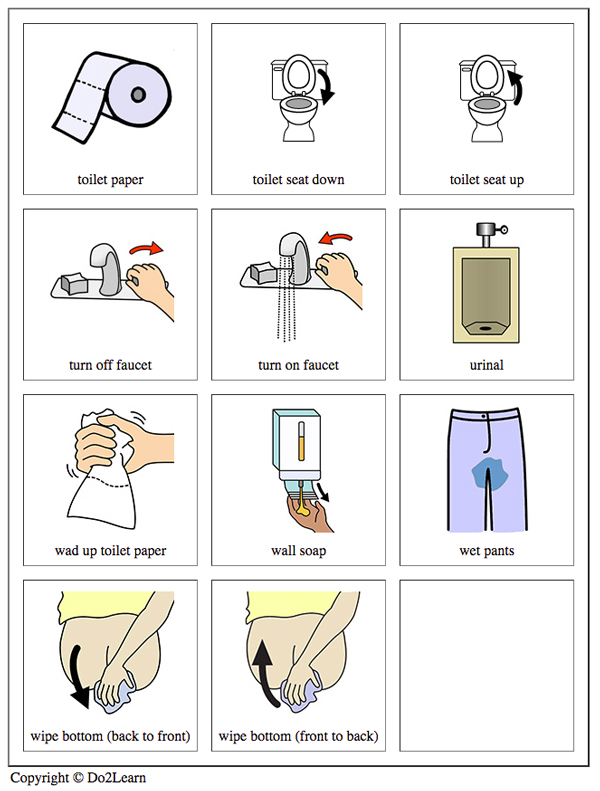 https://do2learn.com/picturecards/printcards/selfhelp_toileting.htm
https://do2learn.com/picturecards/printcards/selfhelp_toileting.htm
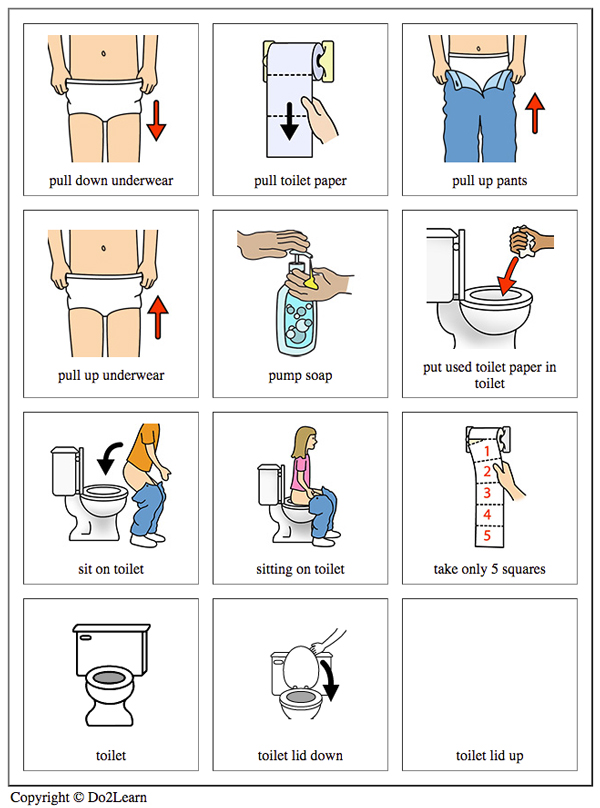 https://do2learn.com/picturecards/printcards/selfhelp_toileting.htm
https://do2learn.com/picturecards/printcards/selfhelp_toileting.htm
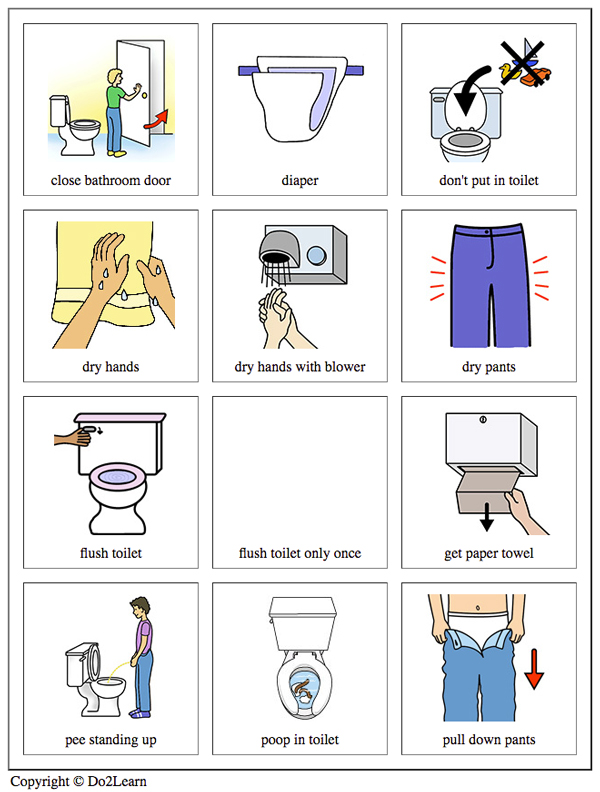 https://do2learn.com/picturecards/printcards/selfhelp_toileting.htm
https://do2learn.com/picturecards/printcards/selfhelp_toileting.htm
- When taking your child to the bathroom, show them the visual of the toilet and say ‘your child’s name, toilet’, take them to the toilet, follow your visual sequence for undressing, and sit your child on the toilet. Even if they do not open their bowel or bladder, continue to follow the visual sequence as if they had. Keep the sequence of behaviors the same every time. Often when an activity is anticipated, less resistance occurs.
- Decide how to praise your child for successfully following the toileting routine. Some children enjoy and respond to social praise (‘well done’, or a tickle) while others respond better to an object or toy such as bubbles, toy cars, balls. Some children find praise difficult and keeping a calm, structured routine with a preferred activity after toileting may work better.
While toilet training your child, have them wear comfortable clothes that are easy for them to change in and out of. Having your child wear “big boy/girl” underwear with their favorite character or preferred design can help as well.
When hand-washing use the same steps every time: sleeves up, water on, wet hands, add soap, rub hands together, rinse off soap, water off, dry hands. Stand behind your child and physically prompt if needed, but slowly withdraw over time.
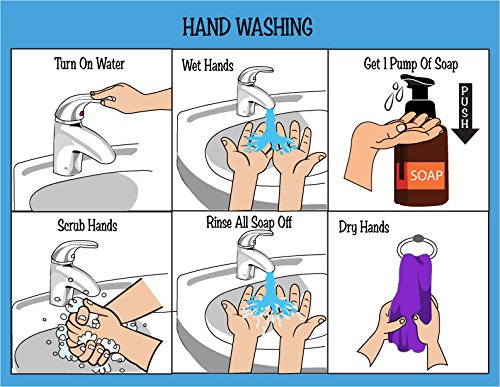
When deciding to teach a boy to use the toilet sitting or standing, ask yourself these questions:
- Can they distinguish between when they have to wee and poo?
- Do they have the co-ordination, control, and focus needed to aim?
- If they learn by imitation, is there someone they can watch?
If you answer yes to any of these, than you can teach your boy standing up. Placing a piece of cereal or other small edible in the toilet can help them learn to aim or you can purchase fun toilet target stickers online.
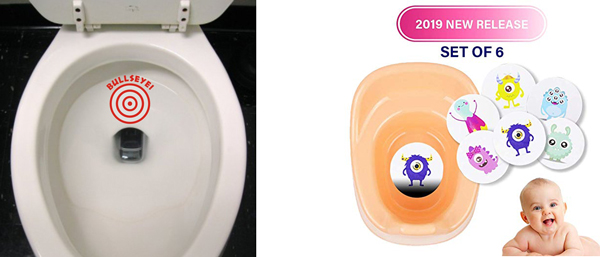 https://www.autism.org.uk/about/health/toilet-training.aspx
https://www.autism.org.uk/about/health/toilet-training.aspx
The bathroom should be a calm, relaxing place for your child to use the toilet. To help decrease resistance, make sure it is clean and remove any items that can be distracting, clutter the area, and/or aren’t needed for the toileting routine and schedule.
« How to Help Your Child with ASD Overcome Her Fear of the Dentist and Establish Lifelong Healthy Oral Hygiene Habits The Importance of Being Silly »
